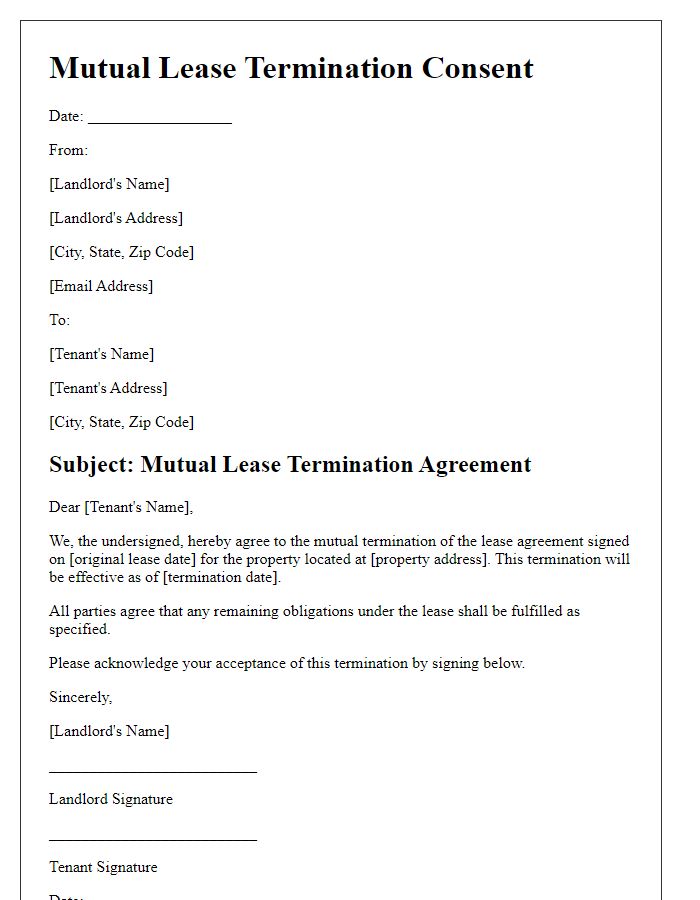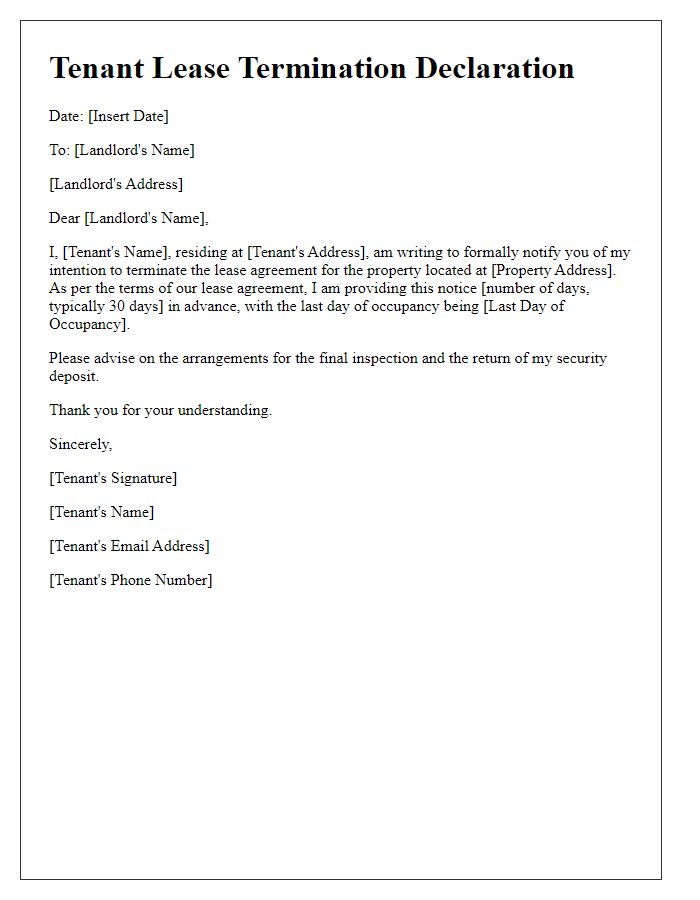Are you facing the difficult task of ending a lease? Whether you're a tenant or a landlord, understanding the lease termination process can be daunting. This article will guide you through the essentials of a lease termination agreement, ensuring you know your rights and responsibilities. So, let's dive in and explore the key elements you need to consider before making that final decision!

Tenant and Landlord Information
A lease termination agreement outlines the conditions under which a rental contract is dissolved between a tenant and a landlord. Tenant information typically includes full name, address of the rental property, and contact information. Landlord details consist of the name of the property owner or management company, address, and contact number. This agreement usually specifies the termination date, details about the return of the security deposit, and any responsibilities regarding property maintenance or final inspections. Clear communication of conditions protects both parties and ensures compliance with local housing laws.
Property Address
A lease termination agreement is essential for formally concluding a tenant's occupancy of a rental property. The agreement specifies the property address, which serves as the location of the leased premises, confirming the exact unit or location involved in the termination. Maintaining accurate details about the property, including the landlord's name and tenant's name, ensures clarity in responsibilities and rights. Completion of this agreement can occur when tenants provide written notice, typically 30 days in advance, about their intent to vacate the premises. It is crucial to outline any stipulations regarding the final inspection of the property, obligations for repair, and return of the security deposit, which often ranges from one to two months' rent. Properly documenting the termination of the lease helps avoid legal disputes and ensures a smooth transition for both parties involved.
Termination Date
A lease termination agreement requires careful attention to specific details to ensure clarity. The termination date holds significant importance, indicating the exact day the lease contract will officially end, impacting both the tenant and landlord. For instance, a tenant may be vacating a unit in a high-demand area like Manhattan, New York, and must adhere to local rental laws regarding notice periods, typically 30 or 60 days before the specified termination date. The local housing authority may also provide guidelines on any potential penalties or required inspections prior to this date. Clear communication of the termination date influences security deposit returns and final utility bill settlements, critical components of the lease conclusion process. Timely notification to both parties ensures a smooth transition and adherence to contractual obligations.
Reason for Termination
A lease termination agreement outlines the conditions under which a rental agreement is prematurely ended. Common reasons for termination include significant property damage, such as water damage from flooding or fire damage from electrical issues, which compromise the safety of tenants. Non-payment of rent is another frequent cause, often occurring when rent is overdue by 30 days or more. Other reasons encompass lease violations, such as unauthorized pets or subletting without consent, which can breach contractual obligations. Additionally, personal circumstances like job relocation or family emergencies may compel a tenant to vacate the premises before the lease term expires, especially in areas like New York City or Los Angeles, where the rental market can be particularly volatile.
Security Deposit Details
A security deposit serves as financial protection for landlords against tenant-related damages or unpaid rent, typically amounting to one month's rent in residential leases. State laws govern the handling of this deposit, including timelines for return, often ranging from 30 to 60 days after lease termination. Specific conditions can impact the refund process, such as unpaid utility bills or damages exceeding normal wear and tear, which must be documented with receipts or photographs. Tenants should provide a forwarding address to ensure the return of the deposit, which may also include accrued interest in some jurisdictions. Accurate accounting of any deductions must be communicated in writing, ensuring transparency for both parties involved in the lease termination agreement.













Comments